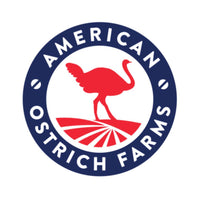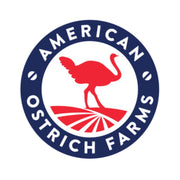Earlier this year, American Ostrich Farms was awarded a grant under the USDA Environmental Quality Incentives Program (EQIP), administered in partnership with Idaho’s Natural Resources Conservation Service (NRCS) State Office. Applications for EQIP grants are ranked according to the environmental benefits of the proposed conservation practices and systems for national, state, and/or local natural resource priorities. Our EQIP grant will help offset the costs to enhance our ranch property with native grasses, trees, and shrubs, as well as installing an efficient irrigation system to support the plantings. We’ve been coordinating with NRCS Conservation Planners to iron out all the details of the project, with an eye on maximizing erosion control, minimizing water consumption, and sequestering additional carbon.
WHY NATIVE PLANTS?
Native plant species, such as sagebrush and Idaho fescue, are already adapted to our arid climate, which means they will require dramatically fewer resources to successfully become established on our property. Whereas new species could introduce new pests or diseases, or alter the feeding habits of pollinators, mammals, and other wild animals, utilizing plants that would otherwise naturally occur here won’t impact the ecological interactions of our native flora and fauna. In fact, as the Boise metro area, and Idaho at large, see record development, adding native plants to the environment may potentially provide refuge and relief to animals whose habitats are experiencing encroachment.
BENEFITS FOR THE ENVIRONMENT
One of the drawbacks of traditional agriculture — wherein native plants are frequently removed to make way for livestock housing, non-native browse and fodder, and a variety of farm-related infrastructure — is the acceleration of erosion. Soil erosion contributes to water pollution due to runoff and potential habitat loss of nearby ecosystems, especially aquatic ones. It also creates opportunities for invasive and noxious weeds to establish themselves and multiply. By preserving and augmenting the number of native plants on our property, we can minimize the amount of sediment lost from our site and help protect the land, water, and other natural resources surrounding our ranch.
In addition to erosion control, planting trees and other greenery provides the ability to sequester more atmospheric carbon. Plants absorb the greenhouse gas carbon dioxide through the process of photosynthesis, effectively removing it from the air and trapping it within the plants’ tissues. Studies have estimated that natural and semi-natural land, such as forests, woodlands, grasslands, and savannas, sequester roughly 30–40% more carbon than highly developed land.
BENEFITS FOR THE BIRDS
American Ostrich Farms’ commitment to sustainability extends beyond natural resource conservation to the very heart of our operation: the ostriches. Enhancing our property with additional trees, shrubs, and grasses will allow our flock to be more productive, naturally. Ostriches are native to the African savanna, a primarily arid environment characterized by a grassy plain studded with well-spaced trees.
While our Idaho ranch shares a surprising number of similarities with the ostrich’s natural habitat, this project will help us to close the gap even further. The addition of these plants will create a living windbreak and provide shade, as well as serve as a visual barrier between different breeding groups. By reducing competition between males, the entire flock will experience reduced stress.
WHAT'S NEXT?
Backyard gardeners will know that the peak of the summer heat is not an ideal time to plant seedlings and starts. We will break ground in the fall, beginning with our breeding areas, when cooler temperatures and moisture return to the area. We’ll continue the project in phases so we can evaluate how well each plant species takes to our property’s soil and geography, as well as observing which plants the ostriches prefer best. As we gain these insights, we will expand into our nursery zones, as well.






